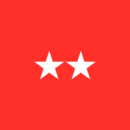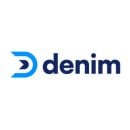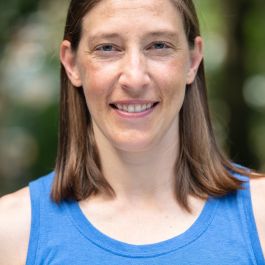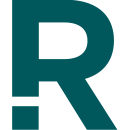Most leaders recognize that certain employees function differently, but knowing how to accommodate those idiosyncrasies can be difficult to ascertain.
At healthtech company Ribbon Health, engineers complete a “working norms” document to help alleviate such uncertainty. Assigned to every new hire upon joining the organization, team members communicate their motivators, stressors, lifestyle goals and working styles to facilitate harmonious interactions with the rest of their colleagues.
“Throughout the pandemic and working remotely, engineers can be especially prone to working in silos and getting lost in our own work,” software engineer June Kang said. “I’ve found it extremely helpful to have the norms documents to remind myself of how to best interact and work with teammates.”
From innovative projects to wide-ranging tech stacks, there’s no shortage of approaches engineering teams take to distinguish themselves. As Built In New York learned through conversations with seven local tech professionals, Ribbon Health’s onboarding exercise is just one way organizations are implementing unique strategies to give engineers the support they need to succeed.
What are some of your favorite tools in your team’s tech stack?
We use Kubernetes on AWS to deploy and manage our containerized stack. Our back end is primarily written in Python, via the Django Framework, but we also have microservices written in Go. In addition, we use Celery, PostgreSQL, ElasticSearch and RabbitMQ. We are currently breaking down our monolithic application into smaller, isolated pieces by incrementally transitioning to an event-driven microservices architecture with Kafka. On the front end, we use React and GraphQL, with Apollo as our GraphQL client. Our stack continues to evolve as we grow, and we are strong believers in finding and adapting the right tool for the right job.
We are strong believers in finding and adapting the right tool for the right job.”
What’s the most interesting project you’re working on right now?
Currently, we are overhauling the way in which users transact on our platform. EquityZen is a technology-driven platform that can help provide liquidity for pre-IPO shares and open access to pre-IPO investments. Given that we are in a highly regulated industry, our internal teams have to perform substantial due diligence once a user has entered into our end-to-end workflow. With this project, we are automating many of the processes that our internal team members regularly have to carry out. However, the more we automate these processes, the more input is required from our clients upfront. My favorite part of this is tackling the challenge of determining the appropriate balance between an optimized external user experience and reducing the need for internal team follow-ups. Filtering and automating time-consuming workflow components is a huge revenue driver for our business. A major area of interest is also our ability to leverage mature data science techniques in order to acquire and process more transactions. Our platform allows us to explore the breadth of technology challenges, which allows the team to grow different skills and continually learn.
What’s something unique about your team compared to other engineering organizations you’ve been part of?
Given that EquityZen operates in a niche market that has experienced tremendous and accelerating growth, our team has the potential to have an enormous impact on our company’s success, as well as that of the pre-IPO marketplace and ancillary institutions. We are navigating largely uncharted waters and developing groundbreaking solutions that could help bring pre-IPO stock to the public. Finally, even as our team continues to scale to include remote developers, we have remained a tight-knit group that shares many of the same values, and we truly believe in our company’s mission. We are constantly looking for ways to engage both local and remote team members for better camaraderie and team culture. Just as we continue to provide increasing access to a diverse user base of shareholders and investors, we’re also proud that the diversity of our internal team is growing in every way, including over a third of our current team of developers being women — and we’re not stopping there!
What are some of your favorite tools in Even Financial’s tech stack?
We work with a variety of different tech stacks and infrastructures at Even Financial. I am part of the front-end team and primarily use React and Typescript. I love front-end development because you see your work come to fruition right away. You bring the user experience to life. I like to describe it as comprehensive and logical problem solving with a design element.
What’s the most interesting project you’re working on right now?
We recently finished redesigning our consumer-facing life insurance page, making the elements easier to navigate, and improved the results page where users can see all the quotes available to them. The most interesting and challenging part is building, refactoring and improving so much of the code around life insurance. We use a lot of the technology the company has built for our other products, namely loans, but we’re also adding new components and functionality to meet the specific needs of the life insurance industry. It’s great collaborating with designers, product managers and other engineers to build out this new product with all of its unique and rewarding challenges.
We’re empowered to try new things, even if it doesn’t always work out. I haven’t experienced that elsewhere.”
What’s something unique about your team compared to other engineering organizations you’ve been part of?
Engineering at Even is managed by team leads who are very open to feedback and ensure that all team members are on the same page. I love working with smart engineers who are humble and ready to lend a helping hand when other engineers have questions. Our team isn’t afraid to build new architecture and make a greater impact. Engineers at Even are empowered to try new things, even if it doesn’t always work out. I haven’t experienced that elsewhere.
What are some of your favorite tools in your tech stack?
At Work & Co, we approach every project by choosing the right tech stack for each problem and client, so it’s important for us to stay flexible and familiar with various tools. I’m currently working on the front end of a web app. Our tech stack includes the React-based Next.js framework, TypeScript for typed JavaScript syntax, Recoil for state management, and Emotion for writing CSS styles with JavaScript and integrating with our client’s APIs and web services.
I’ve loved the experience working with Next.js — it’s very fast, and there are so many incredible built-in features like prefetching pages and image optimization that make development easier. Next.js also has excellent documentation, and it pairs easily with a lot of the other tools we use.
My favorite tool at the moment is Storybook for building, testing and documenting UI components. We use a component-driven design and development approach, and Storybook allows us to build and test UI components in isolation from the bottom up. Work & Co’s technology team includes a phenomenal QA group. Still, I always aim to deliver my work to them as defect-free as possible, so I appreciate that Storybook allows me to test my components before sharing.
What’s the most interesting project you’re working on right now?
I’m working on an audio streaming platform for the web right now, which is part of a larger ecosystem of work that we’re building for the same client. This space is so exciting, and so are our goals, which are to create a multichannel audio streaming platform that will support live streaming, social audio and first- and third-party content. It will serve millions of users. Our team is also integrating against the back end, which includes a brand-new event-driven architecture to orchestrate and aggregate this wealth of content into a high-quality, personalized user experience.
It’s always exciting when we are able to collaborate with a client on multiple streams of work. It’s meaningful to be a part of building trust with a client over time, and getting to know and work with folks across their organizations.
The biggest challenge with development for this project is creating consistency in the experience between a mobile app and web platforms — we’re exploring ways to standardize the approach to development and create efficiencies by sharing some of the code across platforms. This project has been an excellent opportunity to collaborate and share knowledge across multiple teams.
My favorite aspect is being able to partner with engineers who come from diverse backgrounds and expertise.”
What’s something unique about your team compared to other engineering organizations you’ve been part of?
In addition to working side-by-side with teammates in my home city of Portland, Oregon, I collaborate with teammates in Brooklyn, Los Angeles, São Paulo, Rio de Janeiro, Atlanta, Copenhagen and Belgrade. Being so steeped in digital means we’ve gotten really fluid collaborating across time zones. I’d say that my favorite aspect — and a unique strength at Work & Co — is being able to partner with engineers who come from diverse backgrounds and expertise. We learn so much from each other as we push toward a common goal of a successful launch.
One of the advantages of our model is we’re able to solve different challenges and work across a variety of industries because of our client diversity. I work closely with my mentor to determine the skills I’d like to grow and the new frameworks I’m eager to try on my next project. Working with this flexibility means that I’m never stagnant and always learning something new, whether that be a new approach to development or something about a teammate’s culture. In addition to project work, we’re connected globally through a variety of clubs and initiatives.

What are some of your favorite tools in CoreWeave’s tech stack?
Anybody working at CoreWeave becomes a wizard at Kubernetes, as our infrastructure is managed across multiple K8s clusters. We leverage many industry-standard Cloud Native Computing Foundation projects as well as newer, cutting-edge projects rising to prove useful in our cloud environment. We develop our containerized microservices in Python, Go and Ruby when possible. We also have extensive minikube-based support for local development, as well as in-cluster virtual machines to make it easy to work from anywhere.
What’s the most interesting project you’re working on right now?
The team is focused on expanding our cloud product to offer large-scale computing services to the world. Providing these services in a generic, friendly way to the numerous applications and industries in need of them is challenging in itself. Our top priority is offering access to our large number of GPUs securely and reliably. There’s continuous discussion on feature development to make that easier.
Nobody is afraid to hop on a call to chat about project specifics or pair program and screen share when needed.”
What’s something unique about your team compared to other engineering organizations you’ve been part of?
Our team culture is remote-friendly and focused on productivity. Everyone keeps up with documenting their progress, and our asynchronous collaboration works wonderfully. Nobody is afraid to hop on a call to chat about project specifics or pair program and screen share when needed. The mood is lighthearted and the banter is of particularly high quality.
What are some of your favorite tools in your team’s tech stack?
Denim primarily uses Elixir for building our application back end and middle tier. We use React for building client-facing web applications and Retool for building internal dashboards used by our internal teams such as sales, operations and finance. Our application is backed by a PostgreSQL database and our infrastructure runs on Google Cloud Platform. We also rely heavily on event sourcing and Command Query Responsibility Segregation.
What’s the most interesting project you’re working on right now?
Our team is focused on building important features that will set us up for the future. Two areas that I’m really passionate about are security and infrastructure scalability. We’re currently working on projects to help with both of these. This is my first time working in an environment where functional programming is the primary language paradigm. I’m really enjoying learning about what it takes to scale and secure a rapidly evolving Elixir application.
This is one of the most high-performing engineering teams that I’ve had the pleasure of working with.”
What’s something unique about your team compared to other engineering organizations you’ve been part of?
This is one of the most high-performing engineering teams that I’ve had the pleasure of working with. Everyone is really autonomous and on top of their work. Professional development is a high priority for this team, and they’re always willing to take advantage of opportunities to learn and grow. We’re very aligned with the core goals of the company, and engineers aren’t just about pushing code for the sake of pushing code.
What are some of your favorite tools in your team’s tech stack?
At Nayya, we are constantly vetting new tools to tackle our ever-changing needs. We recently adopted Code Climate, which provides automated feedback for common issues like high code complexity and code that isn’t covered by unit tests. While this is in no way a replacement for high-quality code review, it has helped us identify some key areas to work on as a team with respect to code quality and professional development.
The back end for our Choose and Use products is written in Ruby, which is a dynamically typed language. While this worked for the first iterations of our product, as our app became more complex, we made the decision to add Sorbet as a static type checker. I have really enjoyed the stability that strong typing has brought to our app. Sorbet gives me confidence to build quickly with reassurance that a small type error won’t bring down our app.
One of the great things about Nayya is that if we find that one of our tools is slowing us down or not providing the intended benefit, we aren’t afraid to change it.
If we find that one of our tools is slowing us down or not providing the intended benefit, we aren’t afraid to change it.”
What’s the most interesting project you’re working on right now?
There is no shortage of interesting and complex problems to solve in the employee benefits world. This is in part because there are thousands of insurance carriers in the United States, and each carrier has its own way of defining coverage and calculating premiums for the plans that they offer. Developing a lightweight way to ingest and surface premiums that works with any carrier and plan type has been a really fun and rewarding project. In addition to the technical challenge, this project has required me to become a subject matter expert on insurance premiums to ensure that we are building something flexible enough to work with all of the different iterations that exist. I love seeing the value and flexibility this brought to our product initially and that it continues to bring as we are more easily able to support new premium calculations.
What’s something unique about your team compared to other engineering organizations you’ve been part of?
I cannot speak highly enough of the engineering team. Each engineer cares deeply about building and refining our product. We have a culture of working quickly, creatively and efficiently, and we deliver features at an alarming rate. The culture of collaboration and lifting each other up helps us to deliver on this promise. Each team member is generous with their time when it comes to unblocking and helping each other. We value each other’s ideas and contributions, celebrate our successes, and fail publicly. We check our egos at the door and focus on delivering a great product for our North Star, the employee.
What are some of your favorite tools in your team’s tech stack?
We use tons of amazing tech tools here at Ribbon that help with everything from analytics and data engineering to distribution and platform management. Two of my favorites are AWS Secrets Manager and Datadog. As part of our efforts last year to make our infrastructure more secure, we used Secrets Manager to move our systems to a virtual private cloud and centralize our database credentials and third-party API keys. The tool allows us to have access to a customized set of environment variables depending on which production environment we want and saves us a lot of time and effort in application configuration or even local setup. Datadog is a comprehensive service that not only allows us to easily troubleshoot API errors through log tracing, but also lets us monitor the health of our API through synthetic monitors. The synthetic monitors are currently a big driving force behind Ribbon’s API health status page, and Datadog has been a valuable tool across our engineering team.
What’s the most interesting project you’re working on right now?
For the past few months, I’ve been working on a relatively new feature, which is a user interface that will allow our nontechnical users to gain the same value from our API as those more familiar with API logic. I love that this is a fairly new project, so my team has had the opportunity to directly shape the impact this feature will have on patients. We developed this product by working closely with customers to incorporate their needs into our roadmap and gather feedback on new feature launches, which has been extremely rewarding and motivating. I’ve normally been much more of a back-end engineer, but this project has challenged me and pushed me to widen my technical scope. I’ve developed a more solid understanding of how different components of our infrastructure are connected, as it’s a combination of our API, front end React-Gatsby app and Django-based back-end application. So far, this experience has tremendously increased my breadth of engineering knowledge, and I hope that, as I take on more challenges and projects, depth will follow as well.
This experience has tremendously increased my breadth of engineering knowledge.”
What’s something unique about your team compared to other engineering organizations you’ve been part of?
Our engineering team is unique in that we have an extremely lean team that allows us to make fast iterations of product development and rollout. The leading engineer will work hand in hand with a product team member to scope out the user story requirements and technical implementation of a new project. This close alignment between product and engineering means that the timeline of this initial scoping to official launch is optimized. I love that my engineering peers leave code review comments within a few hours of submission while still respecting each other’s’ working norms.















